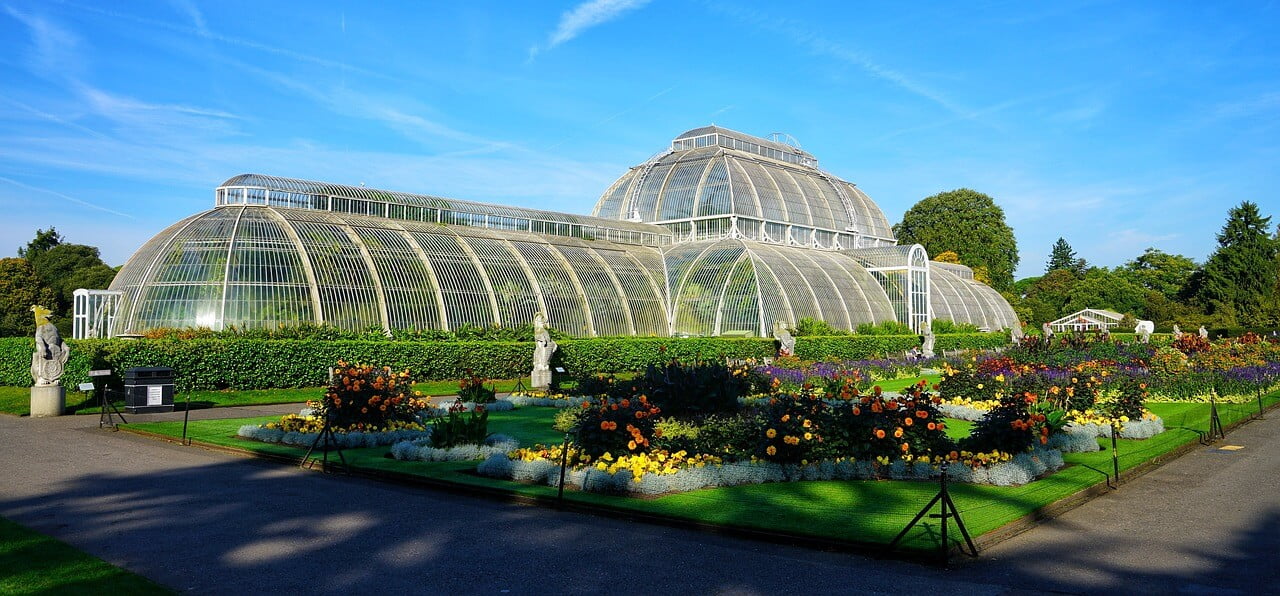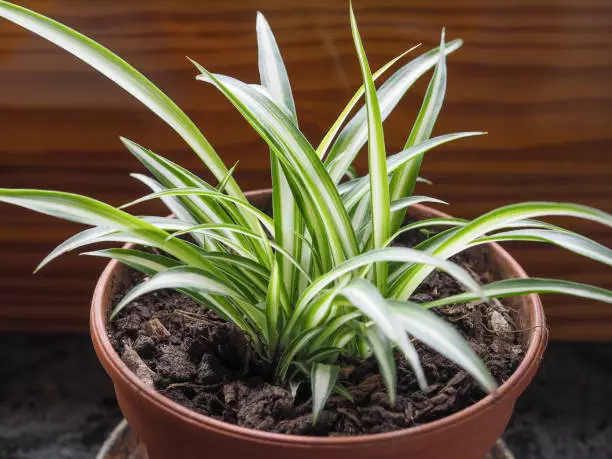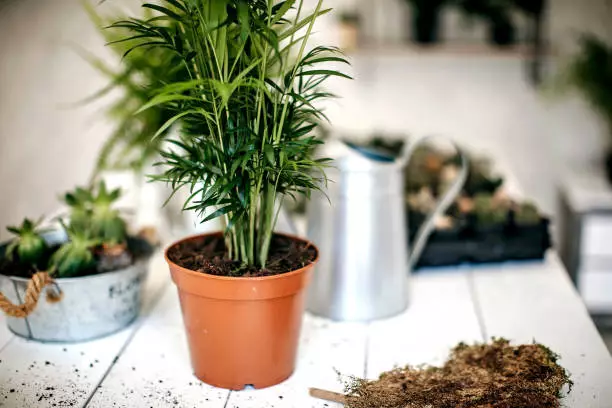Orchids are known for their vibrant and intricate flowers, making them a popular choice for indoor and outdoor gardens alike. However, many people are unsure of how often orchids bloom.
Some orchids may bloom once a year, while others may bloom multiple times a year. The timing of orchid blooms can also vary, with some species blooming in the spring or summer, and others blooming in the fall or winter. It is important for orchid growers to understand the blooming habits of their specific orchid species in order to properly care for them and encourage blooming.
Factors that can impact orchid blooming include temperature, light, humidity, and fertilization. Orchids require specific growing conditions in order to thrive and produce flowers. By providing optimal growing conditions for their orchids, growers can increase the likelihood of frequent and healthy blooms.
Understanding Orchid Bloom
Orchid Bloom Cycle
Orchids are known for their beautiful and exotic flowers, but how often do they bloom? Understanding the bloom cycle of orchids can help you know what to expect from your plant.
The bloom cycle of an orchid can vary depending on the species and growing conditions. Generally, most orchids bloom once a year, but some can bloom more than once a year. The bloom cycle typically lasts for several weeks to a few months, depending on the species.
The bloom cycle of an orchid can be broken down into several stages. The first stage is the development of the flower spike, which can take several weeks to several months. Once the flower spike has developed, the flowers will begin to bloom in succession, with each flower lasting for several days to a few weeks.
After the flowers have all bloomed, the flower spike will begin to dry out and wither away. This signals the end of the bloom cycle and the start of a new growth cycle for the orchid.
Factors Influencing Bloom
Several factors can influence the bloom cycle of an orchid, including:
- Light: Orchids need the right amount of light to bloom. Too little or too much light can prevent blooming or cause the flowers to fade quickly.
- Temperature: Orchids have specific temperature requirements for blooming. Most orchids need a temperature drop at night to trigger blooming.
- Watering: Overwatering or underwatering can prevent an orchid from blooming. It’s important to water orchids properly to ensure healthy growth and blooming.
- Fertilizer: Orchids need the right balance of nutrients to bloom. Too much fertilizer can burn the roots and prevent blooming.
- Potting: Orchids need to be potted in the right type of medium to ensure healthy growth and blooming. Using the wrong type of medium can prevent blooming or cause the flowers to fade quickly.
By understanding the bloom cycle and the factors that influence blooming, you can help your orchid thrive and produce beautiful flowers year after year.
Types of Orchids and Their Bloom Frequency
Phalaenopsis Orchid
Phalaenopsis orchids are one of the most popular orchids due to their ease of care and long-lasting blooms. They typically bloom once or twice a year, with each bloom lasting for several weeks. Phalaenopsis orchids bloom in a variety of colors, including white, pink, yellow, and purple.
Cattleya Orchid
Cattleya orchids are known for their large, showy blooms and are often used in corsages and other floral arrangements. They typically bloom once a year, with each bloom lasting for several weeks. Cattleya orchids come in a range of colors, including white, pink, orange, and red.
Dendrobium Orchid
Dendrobium orchids are a diverse group of orchids that come in a wide range of colors and sizes. They typically bloom once a year, with each bloom lasting for several weeks. Some dendrobium orchids can bloom more than once a year. Dendrobium orchids are often used in floral arrangements due to their long-lasting blooms.
Moth Orchid
Moth orchids, also known as Phalaenopsis orchids, are a popular orchid due to their ease of care and long-lasting blooms. They typically bloom once or twice a year, with each bloom lasting for several weeks. Moth orchids come in a range of colors, including white, pink, yellow, and purple.
Cymbidium Orchid
Cymbidium orchids are known for their large, showy blooms and are often used in floral arrangements. They typically bloom once a year, with each bloom lasting for several weeks. Cymbidium orchids come in a range of colors, including white, pink, yellow, and green.
Vanda Orchid
Vanda orchids are a popular orchid due to their large, showy blooms and vibrant colors. They typically bloom once a year, with each bloom lasting for several weeks. Vanda orchids come in a range of colors, including white, pink, orange, and purple.
Overall, the bloom frequency of orchids can vary depending on the type of orchid and its growing conditions. While some orchids may only bloom once a year, others may bloom multiple times a year. It is important to provide the proper care and growing conditions for your orchid to ensure it blooms to its full potential.
Ideal Environment for Orchid Bloom
Orchids are known for their beautiful and long-lasting blooms. However, to ensure that orchids bloom regularly, it is important to provide them with the ideal environment. The following sub-sections outline the key factors that contribute to the ideal environment for orchid bloom.
Light Requirements
Orchids require bright, indirect light to bloom. Direct sun can scorch their leaves and prevent blooming, while too little light can lead to poor growth and no blooms. The ideal location for orchids is near an east-facing window, where they can receive morning sun and bright, indirect light for the rest of the day. If natural light is not available, artificial light can be used to supplement the orchid’s light requirements.
Temperature and Humidity
Orchids thrive in warm and humid conditions, with temperatures ranging between 60°F and 80°F. However, it is important to provide them with a temperature drop of 10°F to 15°F at night to stimulate blooming. Humidity levels should be around 50% to 70%, which can be achieved by placing a tray of water near the orchid or using a humidifier. Avoid placing orchids near air conditioning or heating vents, as this can cause temperature and humidity fluctuations.
Air Circulation
Orchids require good air circulation to prevent the build-up of stagnant air, which can lead to fungal and bacterial growth. A gentle breeze or a small fan can be used to provide air circulation. However, it is important to avoid placing orchids in drafty areas, as this can cause temperature fluctuations.
In summary, to ensure that orchids bloom regularly, it is important to provide them with the ideal environment. This includes bright, indirect light, warm and humid conditions, and good air circulation. By following these guidelines, orchid owners can enjoy beautiful and long-lasting blooms from their plants.
Orchid Care for Optimal Bloom
Orchids are known for their beautiful and exotic flowers, but they can be a bit finicky when it comes to care. Proper care is essential to ensure that your orchid blooms regularly and stays healthy. Here are some tips for optimal orchid care.
Watering and Fertilizing
Watering is one of the most important aspects of orchid care. Overwatering can lead to root rot, while underwatering can cause the leaves to become wrinkled and unhealthy. It’s important to water orchids only when the top inch of the growing medium is dry. When watering, make sure to thoroughly saturate the growing medium and allow any excess water to drain away.
Fertilizing is also important for orchid health and blooming. Use a balanced fertilizer with equal amounts of nitrogen, phosphorus, and potassium. Fertilize orchids once a month during the growing season and reduce fertilization during the rest period.
Soil and Repotting
Orchids require a well-draining growing medium, such as a mix of bark, perlite, and peat moss. Repot orchids every one to two years, or when the roots start to outgrow the pot. When repotting, make sure to carefully remove any old potting mix and trim any dead or rotting roots.
Pest and Disease Control
Orchids can be susceptible to pests and diseases, such as spider mites and root rot. Regularly inspect your orchids for any signs of pests or disease, such as yellowing leaves or black spots. Use an insecticidal soap or neem oil to control pests, and treat any diseases with a fungicide.
Rest and Dormancy
Orchids require a rest period to encourage blooming. During the rest period, reduce watering and fertilization and provide cooler nighttime temperatures. Some orchid species require a specific rest period, such as a short day for flower initiation.
By following these tips for orchid care, you can ensure that your orchids bloom regularly and stay healthy. Remember to provide the right environmental conditions, such as proper lighting and humidity, and pay attention to the appearance of your orchids for any signs of stress or illness.
Recognizing and Addressing Bloom Issues
Orchids are known for their beauty and exotic appearance, but sometimes they can encounter bloom issues. Recognizing and addressing these issues is crucial to keep the orchids healthy and blooming. This section will cover some of the most common bloom issues and how to address them.
Color Changes
One of the most common bloom issues is color changes. Orchid blooms can change color due to various reasons such as sunlight exposure, temperature changes, and overwatering. If an orchid’s blooms start to fade or change colors, it’s important to identify the cause and address it promptly. For example, if an orchid is exposed to too much sunlight, its blooms may fade or turn brown. In this case, the orchid should be moved to a spot with indirect light.
Bud Issues
Bud issues are another common problem that orchid owners may face. Buds may fall off before they have a chance to bloom, or they may fail to develop altogether. This can be caused by a lack of attention, overwatering, or improper fertilization. To address this issue, it’s important to ensure that the orchid is receiving the right amount of water, light, and nutrients. Additionally, it’s important to avoid over-fertilizing, which can damage the roots and prevent the buds from developing.
Dormancy
Orchids may also go dormant during certain times of the year, such as in the fall or winter. During this time, the orchid may not bloom and may appear to be fading. This is a natural process, and the orchid will eventually come out of dormancy and start blooming again. To encourage the orchid to bloom, it’s important to provide it with the right amount of water and fertilizer during this time.
Fading
Finally, orchid blooms may start to fade over time. This is a natural process, and the blooms will eventually fall off. However, if the blooms are fading prematurely, it may be a sign of a problem. This can be caused by a lack of water or nutrients, or by exposure to too much sunlight. To address this issue, it’s important to ensure that the orchid is receiving the right amount of water, light, and nutrients, and that it’s not being exposed to too much sunlight.
In conclusion, recognizing and addressing bloom issues is crucial for keeping orchids healthy and blooming. By understanding the common bloom issues and their causes, orchid owners can take the necessary steps to ensure that their orchids remain healthy and beautiful.
Frequently Asked Questions
How often should I fertilize my orchids to encourage blooming?
Orchids require regular fertilization to encourage blooming. The frequency of fertilization depends on the type of orchid and the type of fertilizer used. Generally, orchids should be fertilized every two weeks during the growing season and once a month during the dormant season.
What are the best methods to encourage orchids to bloom regularly?
To encourage orchids to bloom regularly, it is important to provide them with the appropriate amount of light, water, and nutrients. Orchids require bright but indirect light, regular watering, and a balanced fertilizer. Additionally, orchids should be kept in a well-draining potting mix and should be repotted every one to two years.
What are the ideal conditions for orchids to bloom indoors?
Orchids require bright but indirect light, warm temperatures, and high humidity to bloom indoors. They should be placed near a window that receives bright but filtered light, and the temperature should be kept between 65 and 80 degrees Fahrenheit. Additionally, orchids should be misted regularly to maintain high humidity levels.
How can I encourage my orchid to grow a new bloom spike?
To encourage an orchid to grow a new bloom spike, it is important to provide it with the appropriate amount of light, water, and nutrients. Additionally, orchids should be kept in a well-draining potting mix and should be repotted every one to two years. If an orchid has finished blooming, it should be allowed to rest for a few months before being encouraged to grow a new bloom spike.
How long can I expect my orchid to live and bloom?
The lifespan of an orchid depends on the type of orchid and the care it receives. Some orchids can live for decades and bloom multiple times a year, while others may only live for a few years and bloom once a year. With proper care, most orchids can live for several years and bloom regularly.
What are some tips to get my orchid to rebloom after the blooms fall off?
To encourage an orchid to rebloom after the blooms fall off, it is important to continue providing it with the appropriate amount of light, water, and nutrients. Additionally, orchids should be allowed to rest for a few months after blooming before being encouraged to grow a new bloom spike. Some orchids may require a period of cooler temperatures or reduced watering to encourage blooming.



